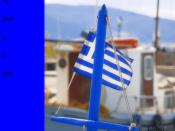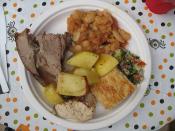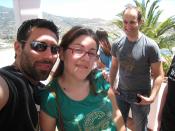The Greek Phalanx
The early Roman army, however, was a different thing altogether than the later imperial army.
At first, under the Etruscan Kings, the massive Greek phalanx was the mode of battle. Early Roman soldiers hence must have looked much like Greek hoplites.
A key moment in Roman history was the introduction of the census (the counting of the people) under Servius Tullius. With this the citizens were graded into five classes, from these classes were in varying degrees recruited the ranks of the army. The most wealthy, the first class, were the most heavily armed, equipped like the Greek hoplite warrior with helmet, round shield, greaves and breastplate, all of bronze, and carrying a spear and sword.
The lesser classes bore lesser armament and weaponry, the fifth class carrying no armour at all, solely armed with slings.
The army officers as well as the cavalry were drawn from leading citizens who were enrolled as equestrians (equites).
All in all the Roman army consisted of 18 centuries of equites, 82 centuries of the first class (of which 2 centuries were engineers), 20 centuries each of the second, third and fourth classes and 32 centuries of the fifth class (of which 2 centuries were trumpeters).
In the early fourth century BC Rome received its greatest humiliation, as the Gauls sacked Rome itself.
If Rome was to reestablish her authority of central Italy, and be prepared to meet any similar disasters in future, some reorganization was needed. These changes were traditionally by the later Romans believed to have been the work of the great hero Fluvius Camillus, but it appears more likely that the reforms were introduced gradually during the second half of the fourth century BC.
Undoubtedly the most important change was the abandonment of the use of...


